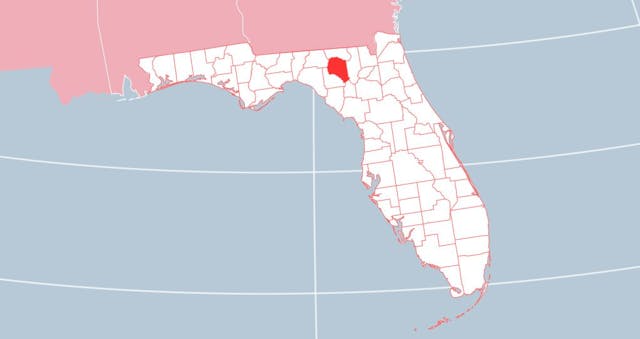Rehabs in Suwannee
Overdose Rates
The state of Florida has recently witnessed an increase in overdose rates. To rephrase, fatal fentanyl overdoses are widespread. The Florida Department of Health data backs up this information. For example, the FL Bureau of Vital Statistics has reported 7,756 drug-related deaths in the first half of 2021. This is a big number for just 6 months. The situation is not comforting in Suwannee county as well.
As the state-wide data shows, this area of the US, like many others, is in need of rehab centers. Therefore, many rehabilitation facilities have been founded that assist addicted people overcome addiction. You should consider attending one of the Suwannee County rehabs if you have this problem.
Treatment Steps
The cure for substance misuse disorder consists of several stages. The first step is a confidential drug and alcohol assessment.
Evaluation
In this stage, a professional evaluates whether an individual has a dependency or not. If addiction is diagnosed, the medical specialist also determines its level and severity. Here are the phases of assessment:
Screening: In this phase, the evaluators use different kinds of inventory questionnaires to evaluate the problem.
A diagnostic interview: In this phase, the medical professionals speak to the person and try to not only assess the issue but also discover whether there are co-occurring disorders.
Treatment Plan Development and Execution
Once the diagnosis is there, an individualized treatment plan is designed to meet the needs of the patient.
The first thing toward healing is detox. It is a process when chemical addictive substances are safely removed from your body.
Only then your body is ready to confront withdrawal symptoms. Now you are ready for the next step. In this case, counseling may be helpful. In particular, there are group and individual therapy sessions. You just have to choose between them and work on your behavioral patterns.
Yet, recovery is a lifelong journey. Therefore, aftercare is as important as the initial efforts.
However, before going through this process, one has to decide which treatment options are suitable for them.
Rehab Programs
There are three types of programs: outpatient, inpatient, and partial hospitalization (PHP). In the case of inpatient care, the rehab personnel removes the patient from the home environment and places them in a facility. There, the client gets supervised care.
Outpatient programs are especially good for those who have family and work responsibilities and cannot leave them. This is highly effective for those with mild or short-lived dependency and symptoms. But for those who have long-term or dual diagnoses, this might be ineffective.
The other option is in the middle of the two. PHP is good for addicts with mild or moderate withdrawal symptoms. It supposes medical supervision but not around the clock.
By the way, if your teen is addicted, FL law allows you to force him or her into rehab.
Payment Options
Now that you have an idea of what the rehabilitation procedure looks like, the next essential question is payment and affordability.
For those who have finances and insurance, there are tons of options. Costly luxury clinics are there for affluent people. Luckily, financially disadvantaged people can also get high-quality services. If you have no insurance and enough money, you should still strive for recovery in these facilities:
State-financed rehabilitations
Faith-based rehabs
Community health clinics or hospitals
Scholarships, grants, sliding scale payment systems, and other payment methods are also available.
To sum it up, sober life is not a dream. In fact, it can become a reality. With a certain amount of dedication and effort, everyone can achieve it - be it a person from an affluent or poor family.

